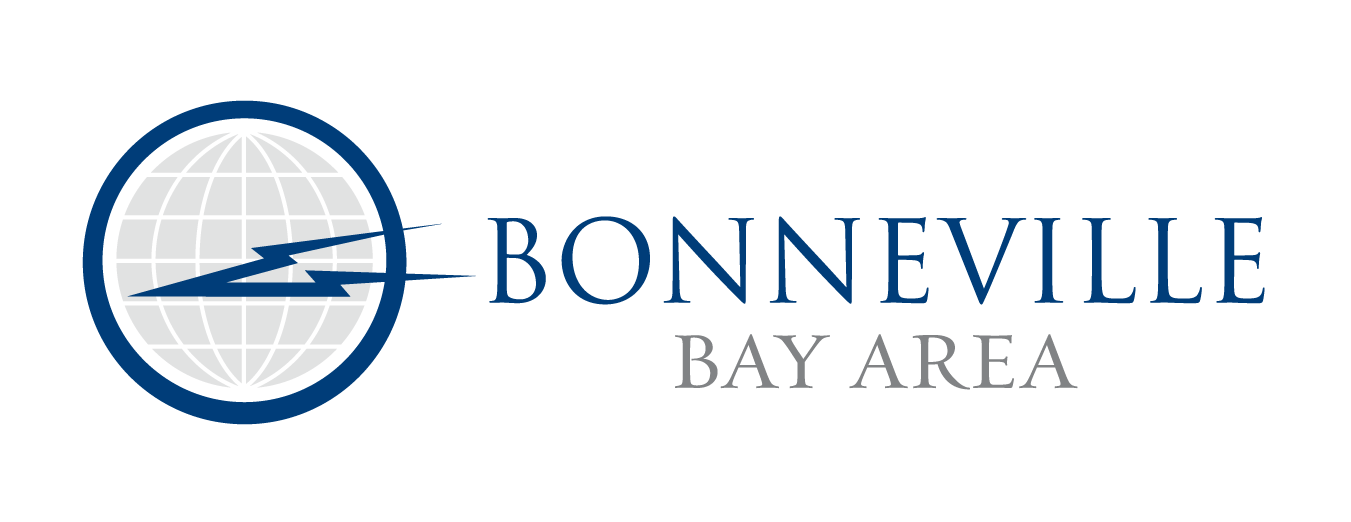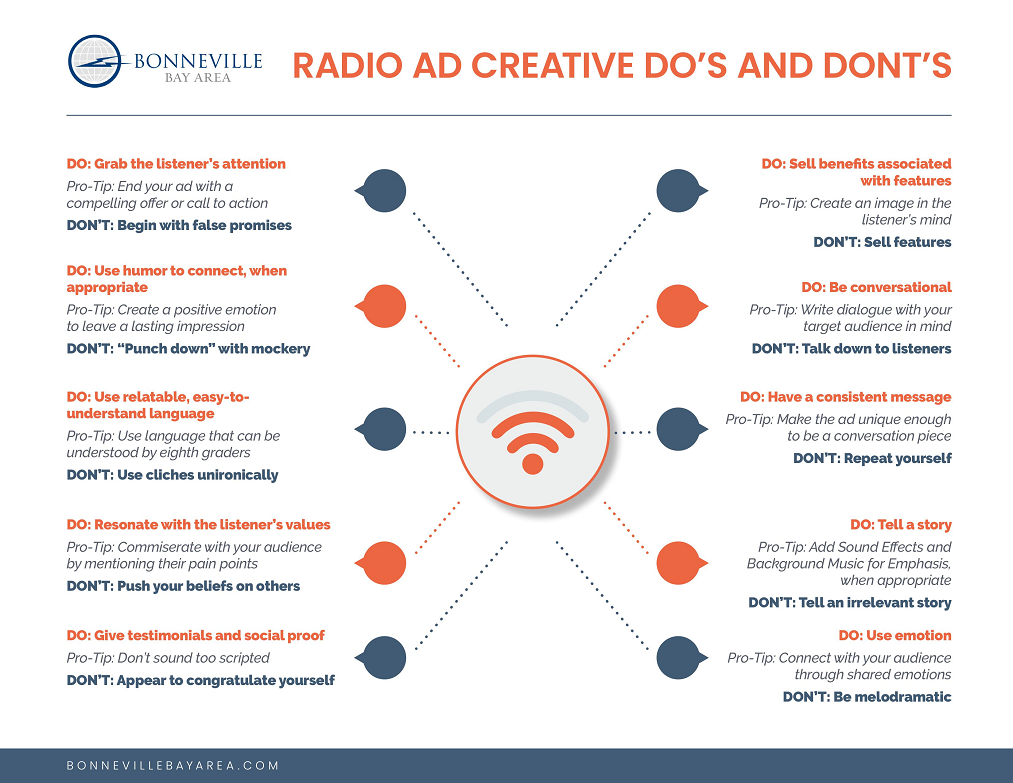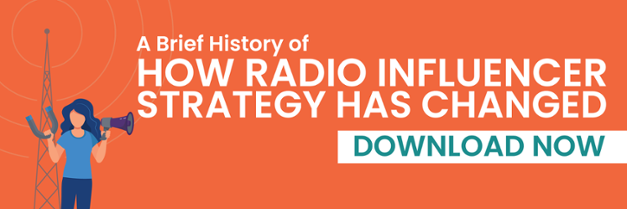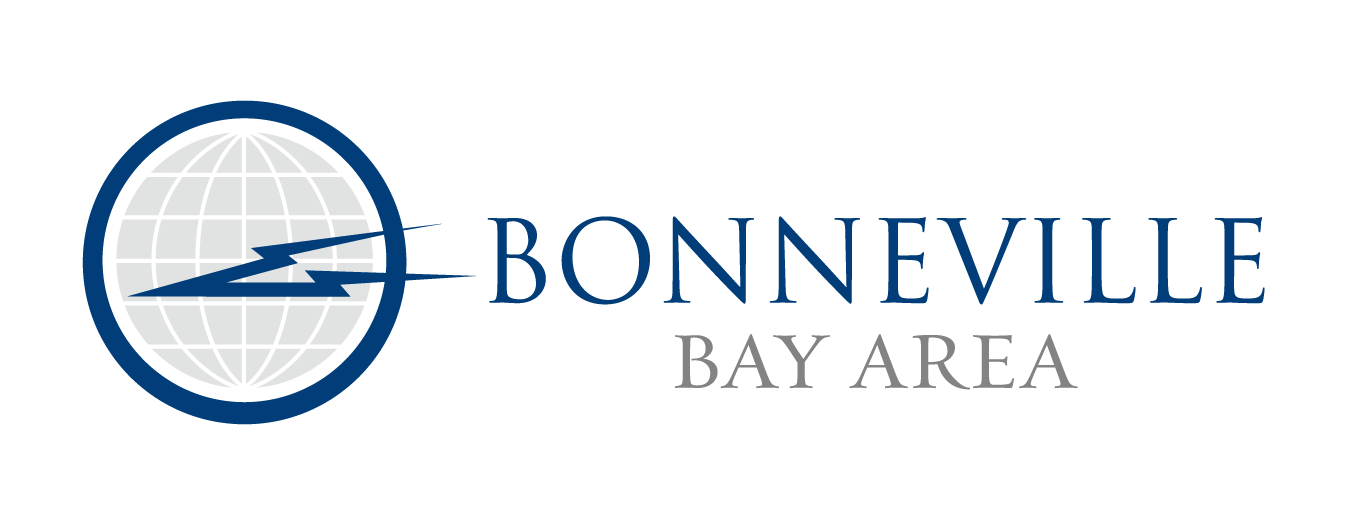With radio ads, there’s a great opportunity for creativity. For best results, we suggest adhering to some simple guidelines to help you achieve success. You want your radio ads to speak to your listeners: to get their attention, convince them of the importance of your product, and invite them to connect with your brand. Here are some strategies to improve the return on your ads and make them more effective.
Do: Grab the listener's attention
Make a statement that will help your brand stand out, or introduce your listeners to something unique that your brand or services offer. Don't begin with false promises; rather, share information about what your brand can accomplish for your listeners. Be authentic!
Do: Use humor to connect, when appropriate
Humor is a great way to create a connection between your brand and the listeners. In fact, humor can make ads more memorable. With improved brand recall, listeners are more likely to turn to you when they have a need for your product, or services. Just be sure you don’t "punch down" and make fun of others. Instead, use humor positively to create a similarly positive impression of your brand. Even with humor, remain thoughtful and sensitive.
Do: Use relatable, easy-to-understand language
Use language the average eighth-grader can understand. Even if you work in a complex industry with detailed concepts, keep your target audience in mind when creating your radio ads. Simplify the concepts. Save in-depth content for white papers, or targeted publications. Don’t use clichés, since they can make your brand appear lazy, and they can sound condescending.
Do: Resonate with the listener's values
Commiserate with your audience. Speak to their pain points. Let listeners know that your brand is in-touch with what's important to them. You can create a deeper sense of connection and let your audience know that you genuinely understand and care about what matters to them. At the same time, don’t push your beliefs on others. Create ads that are focused on your listener, not on your brand's opinions. Always keep in mind, what’s the benefit to the listener?
Do: Give testimonials and social proof
Listeners trust reviews from strangers, almost as much as they trust reviews coming from a familiar source, such as friends and family members. Provide listeners with information about past successes and recommendations from your customers. Sound bites from customers can be powerful. Avoid sounding scripted. Don’t give the impression that you're congratulating yourself. Instead, provide reviews that share how you’ve genuinely benefited your past customers. This strategy can give new customers a better look at how you might benefit them.
Do: Sell benefits associated with features
Consumers care about benefits. They want to know what it is that your brand or product can do for them. Sharing those benefits creates a solid image in the listener's mind, allowing them to imagine what it will be like to use your business, products, or services. Don’t just list features. Instead, share the benefits of those features. What will they do for the customer? How will they address the customer's pain points?
Do: Be conversational
Write dialogue with your target audience in mind. Picture your typical customer. Radio ads take you into your customers' homes, businesses, and cars. Imagine that you have the opportunity to have a conversation with them. What would you say? How would you connect with them? Don't talk down to them. Instead, create a dialogue that shares your brand conversationally and clearly.
Do: Have a consistent message
Create an ad that is unique enough to be a conversation piece, and is consistent with your overall brand image. Don't repeat yourself, but maintain that brand consistency. Your ad’s consistency lets customers know what it will be like to connect directly with your company and your brand, including what they can expect, as far as customer service.
Do: Tell a story
Create a brand story that shares who you are and what's important to your brand. Capture listeners by telling a story that evokes emotion, or includes elements that speak to their situations. Consider adding sound effects and background music for emphasis when appropriate. Make sure, however, that you don’t tell an irrelevant story just for the sake of storytelling. Instead, focus on a story that grabs the listeners attention and reflects your brand and its benefits to consumers.
Do: Use emotion
Emotion is one of the most powerful tools for connecting with your audience. Don't be melodramatic, but do use language and imagery likely to evoke an emotional response. That shared emotional connection can help consumers better remember your brand.
Creating high-quality radio ads can make a huge difference in your ability to connect with consumers and convince them to try your product, or service. These key do's and don'ts provide some guidelines that can help you develop more effective radio ads to increase the return on your advertising investment.





